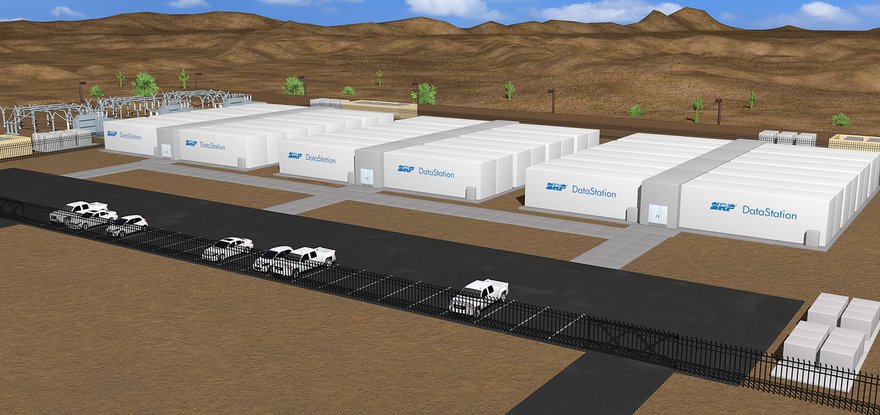Public utility provider Salt River Project (SRP) has awarded BaseLayer a contract to install its modular data centers adjacent to SRP’s power stations in central Arizona. SRP said it will locate the data center modules outdoors, near the utility’s electrical infrastructure, allowing a direct connection to the power grid.
The project combines BaseLayer’s newly rebranded EDGE modular data center units with SRP’s DataStation – a type of “docking station” that allows the modular units a direct conduit to the power grid. SRP said it expects the first DataStation to be deployed during 2015. As a result of more reliable grid connections, the data center will not have a backup diesel generator.
The announcement comes less than one week after BaseLayer was spun off from IO as a stand-alone company. The newly formed hardware and software firm now sells the EDGE line of modular data center units formerly known as IO.Anywhere.
Grid benefits
As representatives from BaseLayer and SRP explained to DatacenterDynamics, placing the modular units closer to the power grid has several benefits. First is allowing data center growth while minimizing the impact of constructing new power lines. Another aim is reducing the time required to increase data center capacity. Instead of lengthy construction projects on new or expanded facilities, organizations that need to ramp up capacity can do so in a more incremental and time-effective manner.
Finally, the units are connected to a "bulk transmission line", which is more reliable than a conventional power feed. The utility promises "seven nines" or 99.99999 percent reliability, but says the figure is actually higher - and the SRP facility has two redundant feeds, allowing it to dispense with the diesel.
“We were in discussions with SRP on a joint agreement about driving the evolution on where data centers are produced, and making them faster and more effective,” recalled William Slessman, CEO of BaseLayer, when asked about the project’s origins. Knowing that his company's data center modules are fully mobile and can be placed anywhere, Slessman said the decision was made to locate the units closer to the power generation source.
“It’s a proof of concept at this time”, he added, “and we are trying to prove that it can be done.”
The DataStation could evolve into a “hub” on the computing grid of the future predicted Mark Bonsall, SRP's general manager and CEO. Both sides in the joint project see it as a test flight that could eventually transform the data center industry for certain business verticals. Reliability strengthens by locating modular units where telecom and power lines meet, with more units subsequently added to keep pace with demand, and faster than stationary facilities can be built or upgraded.
"Investments and partnerships made by SRP over the past century in infrastructure…have resulted in low-cost and reliable supplies of water and energy,” Bonsall noted in a statement. "Like the need for water and power, the future need for information could have a similar economic impact on the Valley and, as such, is worth evaluating and planning for."
“When you look at the fact that data centers reportedly consume 2 percent of all electricity in the US today, and may be poised to go up to 20 percent, then utilities that supply energy to customers need to pay attention to this”, observed Clint Poole, manager of SRP Telecom. “What this project seeks to accomplish”, he continued, “is the ability to grow to that demand today by placing compute load at the most appropriate layer of the power grid – at the volt transmission layer.”

